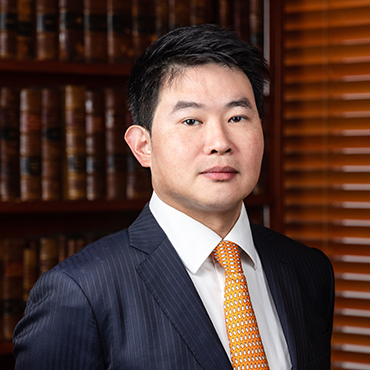Secretary for Justice v Li Kwok-Wing (李國永) & Anor [2024] 6 HKC 250, [2024] HKCFI 2107 (Albert NB Wong)
Albert NB Wong represented the 2nd defendant in Secretary for Justice v Li Kwok-Wing (李國永) & Anor [2024] 6 HKC 250, [2024] HKCFI 2107.
The Secretary for Justice applied for the committal of the defendants (D1, D2) for criminal contempt consequent upon the events occurred after the hearing of a death inquest. It was contended that the defendants’ conducts constituted victimization of PW1 to PW3, respectively the mother, grandfather and cousin of the deceased, for having given evidence on the first day of the inquest. Whilst PW1 to PW3 completed giving their evidence and walked onto the forecourt of the court building, they were surrounded by some journalists and civilians, with members of the civilians followed PW1 to PW3 from the forecourt to the pavement outside and shouted abusive language aggressively towards them. After PW1 to PW3 managed to board a private vehicle, the crowd continued to shout abusive language towards them and the vehicle was blocked briefly. D1 initially followed PW1 to PW3 from behind and caught up with them, holding up both middle fingers towards the back of PW1, and thereafter walked up close to PW1 to PW3, held up his two middle fingers and shouted repeatedly in foul language towards the direction of PW1 to PW3. After PW1 to PW3 boarded the vehicle, D1 and several others stood in front of the vehicle. D2 followed PW1 to PW3 from the side and behind while the crowd shouted abusive language towards them. D1 also published a photograph on his Instagram account depicting PW1 to PW3 and him standing outside the court building and D1 holding up the middle fingers.
Held, finding the 1st and the 2nd defendants guilty of criminal contempt:
(1) Victimization of witnesses, including witnesses who had already given evidence constituted a criminal contempt of court. The power to hold persons in criminal contempt extended to protect anyone having a duty to perform at a court, such that they should be entitled to go to and from a court free from molestation or the fear of molestation. The actus reus also encompassed acts creating a real risk of interference with the due administration of justice. Attorney General v Butterworth [1963] 1 QB 696; Moore v Clerk of Assize, Bristol [1971] 1 WLR 1669; R v AS [2008] EWCA Crim 138; and R v Runting (1989) 89 Cr App R 243 considered (paras 6-7, 10-12).
(2) For contempt in the form of witness interference or victimization, there was no requirement to prove a specific intent to interfere with the administration of justice. Whether a specific or basic intent was required depended on the actual form of contempt and the public policy consideration involved. The administration of justice relied upon the willingness of witness to come forward to testify and to speak the truth. Attorney General v Butterworth (above); and Secretary for Justice v Wong Ho Ming [2018] HKCA 173 ; [2018] HKCU 964 followed. Chu Kong v Sun Min [2023] 1 HKC 468 ; (2022) 25 HKCFAR 318; and Secretary for Justice v Tang Lin Ling [2022] HKCFI 2471 ; [2022] HKCU 3822 considered (paras 13, 16-20).
(3) Given the factual matrix of the present case, the two mens rea were of little difference. The alleged contemnors’ acts, by their own nature, could be inherently likely to interfere or deliberately performed to interfere with the administration of justice (para 22).
(4) On the facts, the plaintiff had proven its case beyond reasonable doubt against the 1st and 2nd defendants that they were guilty of criminal contempt (paras 25-29, 33-37, 39-41).
[The above is excerpted from the headnote to the report in HKC.]


